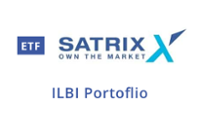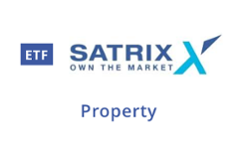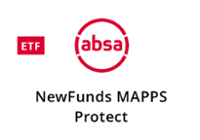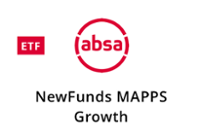Intellidex Reviews February 2020: Other ETFs
In this note, our Exchange Traded Notes provider highlights the international and local events that have driven the performance of dividend/income-themed funds, bond-linked, and diversified funds. Mixing domestic analyses with foreign developments, we're given the opportunity to understand which ETFs outdid others, Intellidex underscore the categories that make for a diversified portfolio in this note.
Local risk assets struggled in January in line with global markets. The FTSE JSE All Share Index fell 2.3% as losses by financials (-5.8%) and resources (-3.7%) more than offset the 0.7% gain by industrials. The NewFunds Govi ETF was the top-performing non-commodity ETF after its share price rose 1.5%. The Satrix Indi 25 ETF was next best with growth of 1.4%. The NewFunds Inflation Linked Bond ETF (+0.7%), the NewFunds TRACI 3 month (+0.5%) and the Satrix Inflation Linked Bonds ETF (+0.2%) complete the top five performers for the month.
Still on the local economy, we are also pricing in a downgrade of SA’s credit rating to junk this year by Moody’s, which will have direct effects on the economy and financial markets. We still believe that reforms will boost the economy, but we do not see them being implemented speedily. It seems the political choice has been made that the governing party is happy with the balance between reform and political risk and this is not going to change before 2022 at the ANC’s next elective conference.
The rand, which is intricately linked to the South African economy and politics, is also bound to continue being volatile. Globally, economic growth is expected to soften but will remain credible. Initial fears of a recession have dissipated on better-than-expected economic data across regions. There is also a feeling that major central banks are set to remain accommodative with monetary policy in the coming year, which will support growth.
The World Bank is projecting global GDP growth of 2.5% which is not bad, particularly for those eyeing assets in developed markets where most of this growth is expected to emanate. However, with the coronavirus in the mix, things may change. While it is still too early to predict its full impact, there is a consensus that it will have a short-term drag on growth in China and its neighbours, as infrastructure networks shut down and more people remain at home.
However, the impact will also depend on China’s response. A concerted policy response from the Chinese authorities seems likely, which may assist a recovery in the coming quarters. We have already seen it with its central bank pumping $173bn into the economy to cushion the shock to financial markets from the outbreak.
ETF Liquidations
There has been an increase in delistings or reconfigurations of ETFs on the JSE over the past few years as asset managers review their offerings in a flat market. CoreShares has been at the forefront of this. It delisted the CoreShares Low Volatility ETF in late 2018, replaced the Equally Weighted Top 40 ETF with the Scientific Beta Multi Factor ETF, and more recently merged the CoreShares PropTrax Sapy ETF and the CoreShares PropTrax Ten ETF into CoreShares SA Property Income ETF.
Absa’s NewFunds also recently delisted all its sector funds – NewFunds S&P GIVI South Africa Resources ETF, NewFunds S&P GIVI South African Industrial ETF and NewFunds S&P GIVI South African Industrial ETF – as well as the NewSA ETF.
In most cases funds were discontinued because they had failed to gain traction, which somewhat speaks to poor or unpopular methodologies. That is why we emphasise that investors should thoroughly scrutinise investment philosophies of the funds before investing. Generally, the larger the fund in terms of assets under management, the lower the chance of liquidation.
ETF Strategy
The are no clear macroeconomic catalysts to lift risks assets and investor sentiment on the JSE. We are likely to see further flight of foreign capital. As a result, we remain in favour of quality, low volatility and defensive equity strategies and bonds.
We also think a good argument can be made in favour of value strategies given the downward rerating of the JSE over the past few months. For offshore exposure we emphasise diversification across developed markets.

ETFs featured
We have split the ETFs featured into three broad categories:
Fixed income and Cash:
Fixed income securities should find their way into a well-diversified portfolio due to their risk-diversification attributes. If you are investing for a short period, usually less than a year, then the NewFunds TRACI (up 0.5%) is a natural choice because it is least sensitive to adverse interest rate movements. For a longer investment horizon, protecting your investment against inflation is paramount.
We maintain our choice of the Satrix ILBI ETF (+0.2%), which has the lowest expense ratio in this category. Furthermore, nominal bonds add a unique risk-return dimension that differs from inflation-linked bonds and improves overall portfolio performance. The only option for local nominal bonds is the Newfunds GOVI ETF (+1.5%).
As with equities, investors also need to diversify their bond portfolios internationally. Our choice is the 1nvest Global Bond ETF (-0.8%), which tracks investment-grade sovereign bonds mostly issued by the US, UK, Japan and selected European countries. The 1nvest Global Bond ETF has the lowest TER in this category.
Dividend or income funds:
If you rely on your investment income for day-to-day expenses you may want to allocate a portion of your portfolio to ETFs that have a high distribution ratio. Property funds tend to have even higher pay-out ratios. Our pick here is the Satrix Property ETF (-7.6%) which has a brilliant diversification approach.
For foreign property funds we like the Sygnia Itrix Global Property ETF (+5.5%). It has an aggressively low total expense ratio (TER) of 0.19% that significantly undercuts its competitors, whose charges range from 0.34% to 0.52%.
Diversified funds:
If you find the process of diversifying your portfolio daunting, two ETFs can do it for you. They combine equities and bonds to produce a diversified portfolio for two investor archetypes with differing risk appetites:
Mapps Protect is more conservative, usually suitable for older savers.
Mapps Growth suits investors with a long-term horizon.
They were down 0.2% and 0.8% respectively.
There's plenty more from where that came from. The team at Intellidex have more insights for the month of February. To see more in-depth analysis and market insights (global and local), check out the full note here.
Background: Exchange-traded funds (ETFs)
Exchange-traded funds (ETFs) are passively managed investment funds that track the performance of a basket of pre-determined assets. They are traded the same way as shares and the main difference is that whereas one share gives exposure to one company, an ETF gives exposure to numerous companies in a single transaction. ETFs can be traded through your broker in the same way as shares, say, on the EasyEquities platform. In addition, they qualify for the tax-free savings account, where both capital and income gains accumulate tax free.
Benefits of ETFs
- Gain instant exposure to various underlying shares or bonds in one transaction
- They diversify risk because a single ETF holds various shares
- They are cost-effective
- They are liquid – it is usually easy to find a buyer or seller and they trade just like shares
- High transparency through daily published index constituents
If you thought this blog was interesting, you should also read:
Intellidex Reviews
February 2020: Local Picks
Disclaimer
This research report was issued by Intellidex (Pty) Ltd. Intellidex aims to deliver impartial and objective assessments of securities, companies or other subjects. This document is issued for information purposes only and is not an offer to purchase or sell investments or related financial instruments. Individuals should undertake their own analysis and/or seek professional advice based on their specific needs before purchasing or selling investments. The information contained in this report is based on sources that Intellidex believes to be reliable, but Intellidex makes no representations or warranties regarding the completeness, accuracy or reliability of any information, facts, estimates, forecasts or opinions contained in this document. The information, opinions, estimates, assumptions, target prices and forecasts could change at any time without prior notice. Intellidex is under no obligation to inform any recipient of this document of any such changes. Intellidex, its directors, officers, staff, agents or associates shall have no liability for any loss or damage of any nature arising from the use of this document.
Remuneration
The opinions or recommendations contained in this report represent the true views of the analyst(s) responsible for preparing the report. The analyst’s remuneration is not affected by the opinions or recommendations contained in this report, although his/her remuneration may be affected by the overall quality of their research, feedback from clients and the financial performance of Intellidex (Pty) Ltd.
Intellidex staff may hold positions in financial instruments or derivatives thereof which are discussed in this document. Trades by staff are subject to Intellidex’s code of conduct which can be obtained by emailing mail@intellidex.coza.
Intellidex may also have, or be seeking to have, a consulting or other professional relationship with the companies mentioned in this report.
Subscribe To Our Research Portal
Search all research
Let Us Help You, Help Yourself
From how-to’s to whos-whos you’ll find a bunch of interesting and helpful stuff in our collection of videos. Our knowledge base is jam packed with answers to all the questions you can think of.





